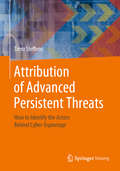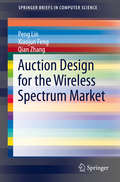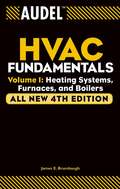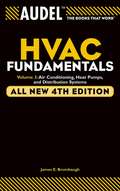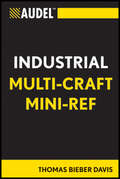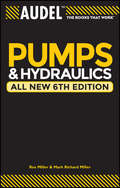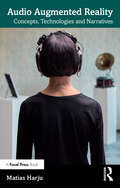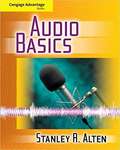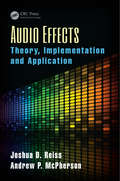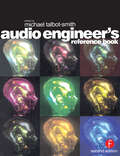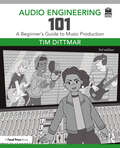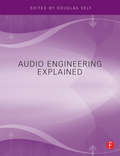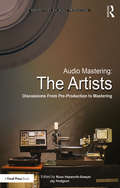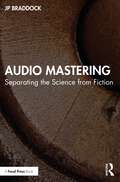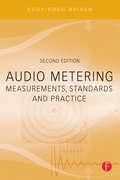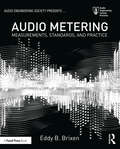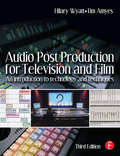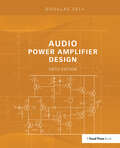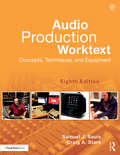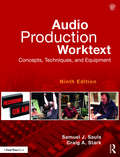- Table View
- List View
Attribution of Advanced Persistent Threats: How to Identify the Actors Behind Cyber-Espionage
by Timo SteffensAn increasing number of countries develop capabilities for cyber-espionage and sabotage. The sheer number of reported network compromises suggests that some of these countries view cyber-means as integral and well-established elements of their strategical toolbox. At the same time the relevance of such attacks for society and politics is also increasing. Digital means were used to influence the US presidential election in 2016, repeatedly led to power outages in Ukraine, and caused economic losses of hundreds of millions of dollars with a malfunctioning ransomware. In all these cases the question who was behind the attacks is not only relevant from a legal perspective, but also has a political and social dimension.Attribution is the process of tracking and identifying the actors behind these cyber-attacks. Often it is considered an art, not a science.This book systematically analyses how hackers operate, which mistakes they make, and which traces they leave behind. Using examples from real cases the author explains the analytic methods used to ascertain the origin of Advanced Persistent Threats.
Auction Design for the Wireless Spectrum Market (SpringerBriefs in Computer Science)
by Qian Zhang Peng Lin Xiaojun FengThis Brief introduces the wireless spectrum market and discusses the current research for spectrum auctions. It covers the unique properties of spectrum auction, such as interference relationship, reusability, divisibility, composite effect and marginal effect, while also proposing how to build economic incentives into the network architecture and protocols in order to optimize the efficiency of wireless systems. Three scenarios for designing new auctions are demonstrated. First, a truthful double auction scheme for spectrum trading considering both the heterogeneous propagation properties of channels and spatial reuse is proposed. In the second scenario, a framework is designed to enable spectrum group secondary users with a limited budget. Finally, a flexible auction is created enabling operators to purchase the right amounts of spectrum at the right prices according to their users' dynamic demands. Both concise and comprehensive, Auction Design for the Wireless Spectrum Market is suited for professionals and researchers working with wireless communications and networks. It is also a useful tool for advanced-level students interested in spectrum and networking issues.
Auction Theory for Computer Networks
by Ping Wang Zhu Han Dusit Niyato Nguyen Cong LuongDo you have the tools to address recent challenges and problems in modern computer networks? Discover a unified view of auction theoretic applications and develop auction models, solution concepts, and algorithms with this multidisciplinary review. Devise distributed, dynamic, and adaptive algorithms for ensuring robust network operation over time-varying and heterogeneous environments, and for optimizing decisions about services, resource allocation, and usage of all network entities. Topics including cloud networking models, MIMO, mmWave communications, 5G, data aggregation, task allocation, user association, interference management, wireless caching, mobile data offloading, and security. Introducing fundamental concepts from an engineering perspective and describing a wide range of state-of-the-art techniques, this is an excellent resource for graduate and senior undergraduate students, network and software engineers, economists, and researchers.
Audel Electrical Trades Pocket Manual
by L. W. BrittianAnswers at your fingertipsThis hands-on guide will help you trouble-shoot and solve electrical problems in industrial and commercial settings. You'll find plain-English explanations for a wide range of electrical equipment and systems, from transformers and switchgears to alarm and wiring systems. Use this book to quickly access reliable information and improve your on-the-job skills. Get useful rules of thumb and quick tricks Discover formulas, charts, and tables essential for plant electrical work Locate technical data quickly and get up to speed on everyday electrical questions Packed with illustrations that help you grasp ideas quickly and easily
Audel HVAC Fundamentals, Volume 1: Heating Systems, Furnaces and Boilers (Audel Technical Trades Series #17)
by James E. BrumbaughA reference you'll warm up to From the background and basics of heating systems to the newest chip-based technology, this first volume of Audel's HVAC Library gives you comprehensive information you need on the job. Whether you're installing, servicing, repairing, or troubleshooting an old or new heating system, you'll find what you're looking for, from wood and coal furnace maintenance to new calculations and the latest environmental technologies and regulations. * Review the basics of installation, wiring, and troubleshooting for different HVAC systems * Choose the correct system for the space, climate, and needs * Compare the economy and efficiency of various fuel types * Install, maintain, and troubleshoot conversion units * Find formula cross references, data tables with conversions, and listings of trade organizations and equipment manufacturers
Audel HVAC Fundamentals, Volume 3: Air Conditioning, Heat Pumps and Distribution Systems (Audel Technical Trades Series #6)
by James E. BrumbaughKeep it cool or heat things up This third volume of Audel's HVAC Library gives you a comprehensive, hands-on guide to installing, servicing, and repairing all basic air-conditioning systems in both new and older construction. You'll also find complete coverage of specialized heating units-radiators, radiant heating systems, stoves, fireplaces, heat pumps, and indoor/outdoor pool heaters, plus fans, exhaust systems, air filters, and more. It's what you need to complete your HVAC reference library. * Make accurate calculations for AC system output * Tailor AC systems for older construction * Learn to install and service today's popular electronic air cleaners and filters * Service less common heating systems such as coal-fired furnaces * Install, maintain, and repair humidifiers and dehumidifers * Handle radiators, convectors, and baseboard heating units
Audel Industrial Multi-Craft Mini-Ref
by Thomas Bieber DavisAn essential, pocket-sized manual for industrial craftspeople from a brand relied on for more than a century The Audel(tm) Industrial Trades Multi-Craft Reference Manual is aimed at the industrial mechanic, millwright, machinist, plumber, pipefitter, welder, carpenter, sheet metal mechanic, and other skilled craftspeople who need quick, no-nonsense access to dependable information--fast. Including up-to-date focus on "green" thinking and industrial sustainability, this handy, compact guide serves as an ideal on-the-job reference on topics such as pump facts, bearing information, motor facts, wood and carpentry, pipefitting, welding, blacksmithing, and much more. New Audel book from bestselling author Tom Davis Topics searchable by machine, device, or material Heavily illustrated and designed with lay-flat binding for ease of use on the job Includes worked-out examples when math is presented to accelerate learning Building on a rich legacy of titles from the celebrated Audel brand, this new addition to their esteemed lineup continues the tradition of delivering trusted content skilled workers reach for the most.
Audel Pumps and Hydraulics
by Mark Richard Miller Harry L. Stewart Rex MillerPull up what you need to knowPumps and hydraulic equipment are now used in more facets of industry than ever before. Whether you are a pump operator or you encounter pumps and hydraulic systems through your work in another skilled trade, a basic knowledge of the practical features, principles, installation, and maintenance of such systems is essential. You'll find it all here, fully updated with real-world examples and 21st-century applications.Learn to install and service pumps for nearly any applicationUnderstand the fundamentals and operating principles of pump controls and hydraulicsService and maintain individual pumping devices that use smaller motorsSee how pumps are used in robotics, taking advantage of hydraulics to lift larger, heavier loadsHandle new types of housings and work with the latest electronic controlsKnow the appropriate servicing schedule for different types of pumping equipmentInstall and troubleshoot special-service pumps
Audio Augmented Reality: Concepts, Technologies and Narratives
by Matias HarjuAudio Augmented Reality: Concepts, Technologies and Narratives provides readers with a comprehensive overview of audio augmented reality (AAR), focussing on its narrative potential while discussing several design considerations and prospective application domains.In this groundbreaking book, sound designer Matias Harju provides a practical and insightful exploration of the medium. The book draws perspectives from sound designers, researchers and industry professionals who are actively shaping this rapidly evolving field.Designed to inspire and offer practical insights, Audio Augmented Reality: Concepts, Technologies and Narratives serves as a guide for creators, academics, and anyone interested in exploring the creative potential of AAR.
Audio Basics
by Stanley AltenWritten by highly respected author Stan Alten, AUDIO BASICS provides readers with a fundamental understanding of the principles, technology, and techniques of audio production. Because the material is not medium-specific, readers can apply techniques to sound production in any of the major audio and audio/visual media.
Audio Effects: Theory, Implementation and Application
by Joshua D. Reiss Andrew McPhersonAudio Effects: Theory, Implementation and Application explores digital audio effects relevant to audio signal processing and music informatics. It supplies fundamental background information on digital signal processing, focusing on audio-specific aspects that constitute the building block on which audio effects are developed. The text integrates t
Audio Engineer's Reference Book
by Michael Talbot-SmithAn authoritative reference on all aspects of audio engineering and technology including basic mathematics and formulae, acoustics and psychoacoustics, microphones, loudspeakers and studio installations. Compiled by an international team of experts, the second edition was updated to keep abreast of fast-moving areas such as digital audio and transmission technology. Much of the material has been revised, updated and expanded to cover the very latest techniques. This is a new paperback version.
Audio Engineering 101: A Beginner's Guide to Music Production
by Tim DittmarPratical, concise, and approachable, Audio Engineering 101, Second Edition covers everything aspiring audio engineers need to know to make it in the recording industry, from the characteristics of sound to microphones, analog versus digital recording, EQ/compression, mixing, mastering, and career skills. Filled with hand-on, step-by-step technique breakdowns and all-new interviews with active professionals, this updated edition includes instruction in using digital consoles, iPads for mixing, audio apps, plug-ins, home studios, and audio for podcasts. An extensive companion website features fifteen new video tutorials, audio clips, equipment lists, quizzes, and student exercises.
Audio Engineering 101: A Beginner's Guide to Music Production
by Tim DittmarPractical, concise, and approachable, the third edition of Audio Engineering 101: A Beginner’s Guide to Music Production offers readers an extensive introduction to audio engineering and music production.Featuring step-by-step breakdowns and interviews with active professionals, the book covers waveform characteristics, EQ, signal flow, acoustics, and signal processors, as well as often overlooked topics such as internships, people skills, and job opportunities in the industry. This updated edition includes answers to common questions from audio engineering students by a diverse range of professionals, as well as a more extensive chapter discussing microphones. QR codes are included throughout the book, providing readers with instant access to video and audio clips to aid in the comprehension of the material.Filled with practical advice for navigating a mysterious and confusing industry, and supported by extensive audio and video resources, Audio Engineering 101 is the go-to guide for students and audio engineers looking to succeed in the recording world.
Audio Engineering Explained
by Douglas SelfAll the design and development inspiration and direction an audio engineer needs in one blockbuster book! Douglas Self has selected the very best sound engineering design material from the Focal and Newnes portfolio and complied it into this volume. The result is a book covering the gamut of sound engineering.The material has been selected for its timelessness as well as for its relevance to contemporary sound engineering issues.
Audio Mastering: Discussions from Pre-Production to Mastering (Perspectives on Music Production)
by Jay Hodgson Russ Hepworth-SawyerAudio Mastering: The Artists collects more than twenty interviews, drawn from more than 60 hours of discussions, with many of the world’s leading mastering engineers. In these exclusive and often intimate interviews, engineers consider the audio mastering process as they, themselves, experience and shape it as the leading artists in their field. Each interview covers how engineers got started in the recording industry, what prompted them to pursue mastering, how they learned about the process, which tools and techniques they routinely use when they work, and a host of other particulars of their crafts. We also spoke with mix engineers, and craftsmen responsible for some of the more iconic mastering tools now on the market, to gain a broader perspective on their work. This book is the first to provide such a comprehensive overview of the audio mastering process told from the point-of-view of the artists who engage in it. In so doing, it pulls the curtain back on a crucial, but seldom heard from, agency in record production at large.
Audio Mastering: Separating the Science from Fiction
by JP BraddockAudio Mastering: Separating the Science from Fiction is an ideal guide to tangible development as a mastering engineer. This book offers a comprehensive overview of mastering processes, teaching the reader to link critical listening skills with analysis to comprehend the processing required to improve the quality of their audio. Whether involved in game audio, composing for film and television, producing rock or programming EDM, the aesthetics required to manipulate and assess audio for mastering are a highly valuable addition to any artist or engineer's skill set. Audio Mastering encourages readers to engage in personal analysis and, in doing so, contextualise their evaluations by linking to appropriate and available processing tools. Discussion of processing conventions and theory are included to help readers create an effective audio chain utilising the best properties from each process, as well as practical examples and additional online resources to support development of skilled processing control. This is a thorough and practical textbook for audio engineers, artists, producers and students on music production, music technology and music performance courses, and for aspiring and developing mastering engineers.
Audio Metering
by Eddy BrixenIn this comprehensive guide Eddy Bøgh Brixen will take you through the complex and confusing concept of audio metering, giving you the knowledge and skills you need to utilize optional signal levels and produce high quality audio. Covering all areas of this essential topic, Audio Metering begins with the basics- audio definitions and digital techniques, and works up to hearing and psychoacoustics. Levels in audio are defined, and the metering standards and practices are discussed, covering the existing standards abs VU and PPM, as well as the new loudness metering standards, making this the reference guide to audio metering. This new edition includes * Current information on loudness metering, covering existing and new standards, defining terms like LU, RLB, and LKFS* Explanations of music sounds and structures * An extended chapter on topics relevant to the sound engineer in the field of psychoacoustics* More details on speech intelligibility and it's measures* The skills needed for both small room acoustics and large auditoriums sound design without losing sound quality * An extended glossary Packed full of valuable information that can be applied to a wide variety of everyday tasks, this handbook is essential reading for all technicians and engineers working with acoustics, electro acoustics and audio forensics. It also provides essential information for anyone working with loudspeakers and large scale amplifiers, including sound design for theatrical and live audio set-ups.
Audio Metering: Measurements, Standards and Practice (Audio Engineering Society Presents)
by Eddy BrixenIn this comprehensive guide, Brixen takes the reader through the complex and confusing aspects of audio metering, imparting the knowledge and skills needed to utilize optional signal levels and produce high-quality audio. Covering all aspects of this fundamental subject, Audio Metering: Measurements, Standards and Practice begins with the basics, such as audio definitions and digital techniques, and works up to more complex topics like hearing and psychoacoustics. This revised and expanded third edition includes: Updated information on loudness metering, covering both existing and new standards. Definitions of terms such as LKFS, LUFS, gating, LRA. Explanations of signal types and musical sounds and structures. Further details on immersive audio. Skills needed for both small-room acoustics and large auditorium sound design without loss of sound quality. Descriptions of measurement signals and systems for audio and acoustic sound. A chapter on listening tests from small set-ups to large-scale comparisons of PA/SR-systems. Packed full of valuable information with a wide range of practical applications, this is the essential reference guide to audio metering for technicians, engineers, and tonmeisters, as well as sound designers working with acoustics, electroacoustics, broadcast, studio recording, sound art, archiving, audio forensics, and theatrical and live-audio setups.
Audio Post Production for Television and Film: An introduction to technology and techniques
by Hilary Wyatt Tim AmyesPreviously titled Audio Post-production in Video and Film, this third edition has been completely revised and restructured to provide a step-by-step guide to the professional techniques used to shape a soundtrack through the production process. Covering sound for both film and television, this edition includes many of the practical techniques and shortcuts used by experienced editors and mixers. Part one explains the basics of audio post production - how audio is recorded, how sound and picture stay in sync, how audio can be exported from system to system, and how film and video technology works. Part two follows the path of production sound from its original recording right through to the final mix, and includes sections on editing sound with picture, dialogue, sound effects and music editing, how to run ADR and Foley record sessions, and mixing, using many practical examples.Audio Post Production for Television and Film is aimed at professionals already working in the industry, newcomers, students and those considering sound for film and television as a career - in fact anyone who wants an insight into current professional practices and a comprehensive overview of the sound post production process.
Audio Power Amplifier Design
by Douglas SelfThis book is essential for audio power amplifier designers and engineers for one simple reason...it enables you as a professional to develop reliable, high-performance circuits. The Author Douglas Self covers the major issues of distortion and linearity, power supplies, overload, DC-protection and reactive loading. He also tackles unusual forms of compensation and distortion produced by capacitors and fuses. This completely updated fifth edition includes four NEW chapters including one on The XD Principle, invented by the author, and used by Cambridge Audio. Crosstalk, power amplifier input systems, and microcontrollers in amplifiers are also now discussed in this fifth edition, making this book a must-have for audio power amplifier professionals and audiophiles.
Audio Processing and Speech Recognition: Concepts, Techniques and Research Overviews (SpringerBriefs in Applied Sciences and Technology)
by Soumya Sen Nilanjan Dey Anjan DuttaThis book offers an overview of audio processing, including the latest advances in the methodologies used in audio processing and speech recognition. First, it discusses the importance of audio indexing and classical information retrieval problem and presents two major indexing techniques, namely Large Vocabulary Continuous Speech Recognition (LVCSR) and Phonetic Search. It then offers brief insights into the human speech production system and its modeling, which are required to produce artificial speech. It also discusses various components of an automatic speech recognition (ASR) system. Describing the chronological developments in ASR systems, and briefly examining the statistical models used in ASR as well as the related mathematical deductions, the book summarizes a number of state-of-the-art classification techniques and their application in audio/speech classification. By providing insights into various aspects of audio/speech processing and speech recognition, this book appeals a wide audience, from researchers and postgraduate students to those new to the field.
Audio Production Tips: Getting the Sound Right at the Source
by Peter DowsettAudio Production Tips: Getting the Sound Right at the Source provides practical and accessible information detailing the production processes for recording today’s bands. By demonstrating how to "get the sound right at the source," author Peter Dowsett lays the appropriate framework to discuss the technical requirements of optimizing the sound of a source. Through its coverage of critical listening, pre-production, arrangement, drum tuning, gain staging and many other areas of music production, Audio Production Tips allows you to build the wide array of skills that apply to the creative process of music production. Broken into two parts, the book first presents foundational concepts followed by more specific production advice on a range of instruments. Key features: Important in-depth coverage of music theory, arrangement and its applications. Real life examples with key references to the author’s music production background. Presents concepts alongside the production of a track captured specifically for the book. A detailed companion website, including audio, video, Pro Tools session files of the track recording process, and videos including accompanying audio that can be examined in the reader’s DAW. Please visit the accompanying companion website, available at www.audioproductiontips.com, for resources that further support the book’s practical approach.
Audio Production Worktext: Concepts, Techniques, and Equipment
by Samuel J. Sauls Craig A. StarkThis is an excellent introduction to the modern radio production studio, the equipment found in that studio, and the basic techniques needed to accomplish radio production work. The new edition is updated throughout and features new sections on mobile technology, audio editing apps and software, and digital editing, as well as updated graphics and expanded content on portable digital audio players. Features a worktext/website format tailored for both students and teachers, offering a solid foundation for anyone who wishes to know more about radio/audio equipment and production techniques.
Audio Production Worktext: Concepts, Techniques, and Equipment
by Samuel J. Sauls Craig A. StarkAudio Production Worktext, 9th Edition provides readers the best introduction to audio and radio production. It shows how to navigate modern radio production studios and utilize the latest equipment and software. The 9th edition is updated to cover new mobile technologies, digital consoles, and audio editing apps and software, as well sound for the visual media and Internet radio. The new edition continues to include the worktext/website format tailored for both students and teachers and features like Production Tips that provide notes relevant to various audio production topics, self-study questions and projects, an updated Glossary, and an up-to-date companion website with invaluable student and instructor materials. Included in this edition are offers and features from Pro Sound Effects, FilmTVsound.com, and RadioFX, as well as updated color graphics and images throughout the text.
